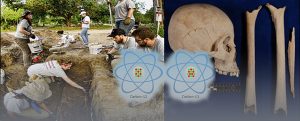Date July 2016 Overview The 2016 NIJ Research and Development Symposium is intended to promote collaboration and enhance knowledge transfer of NIJ-funded research. The NIJ Research and Development (R&D) Program funds both basic or applied R&D projects that will (1)…
Category: Pathology (page 7)
HHRRC – Stable Isotope Forensics & Unknown Persons Investigations
← Back to Series This webinar originally occurred on May 24, 2017 Duration: 2 hours Overview This webinar discussed applications of stable isotope analysis for predicting region of origin of unidentified border crossers found within the United States. Participants will…
2015 NIJ Forensic Science R&D Symposium
Overview The Forensic Technology Center of Excellence (FTCOE) assisted the National Institute of Justice (NIJ) in hosting the annual NIJ Forensic Science Research and Development (R&D) Symposium on February 17, 2015 at the American Academy of Forensic Sciences (AAFS) meeting…
HHRRC – Nerve Agent Uptake and Detection in Human Bone
← Back to Series The webinar originally occurred on May 9th, 2017 Duration: 1 hour Overview This presentation discusses experimental tests of a model for drug uptake by human bone and explores how the results may be applied to detect…
R&D 2014 – Models in Forensic DNA & Pathology Part II
Overview This archival portion of the 2014 R&D Seminar Series covers the following presentations: • New Pediatric Head Injury Assessment Tool for Possible Child Abuse Cases Considering Subject-Specific Child Head Anatomy – Dr. Jingwen Hu • Investigation of the Impact…
R&D 2014 – Models in Forensic DNA & Pathology – Part I
Overview This archival portion of the 2014 R&D Seminar Series covers the following presentations: • Modeling 3D Facial Shape from DNA – Dr. Mark Shriver • Pediatric Fracture Printing: Creating a Science of Statistical Fracture Signature Analysis – Dr. Todd…
Success Story: Understanding the Ecology of Human Decomposition Methods for Estimating Postmortem Interval
National Institute of Justice and the National Museum of Health and Medicine Date April 2015 Overview Data on the microbiome of decomposing and skeletonized remains are providing an avenue for understanding how microbial communities may be used to augment medicolegal…
Success Story: Improving Identification of Mexican Hispanic Remains
National Institute of Justice and Texas State University Date April 2015 Overview In the United States, the Mexican Hispanic population ranks second in total size, yet Mexican Hispanic individuals often remain unidentified in forensic anthropological cases. The reason? There has…







